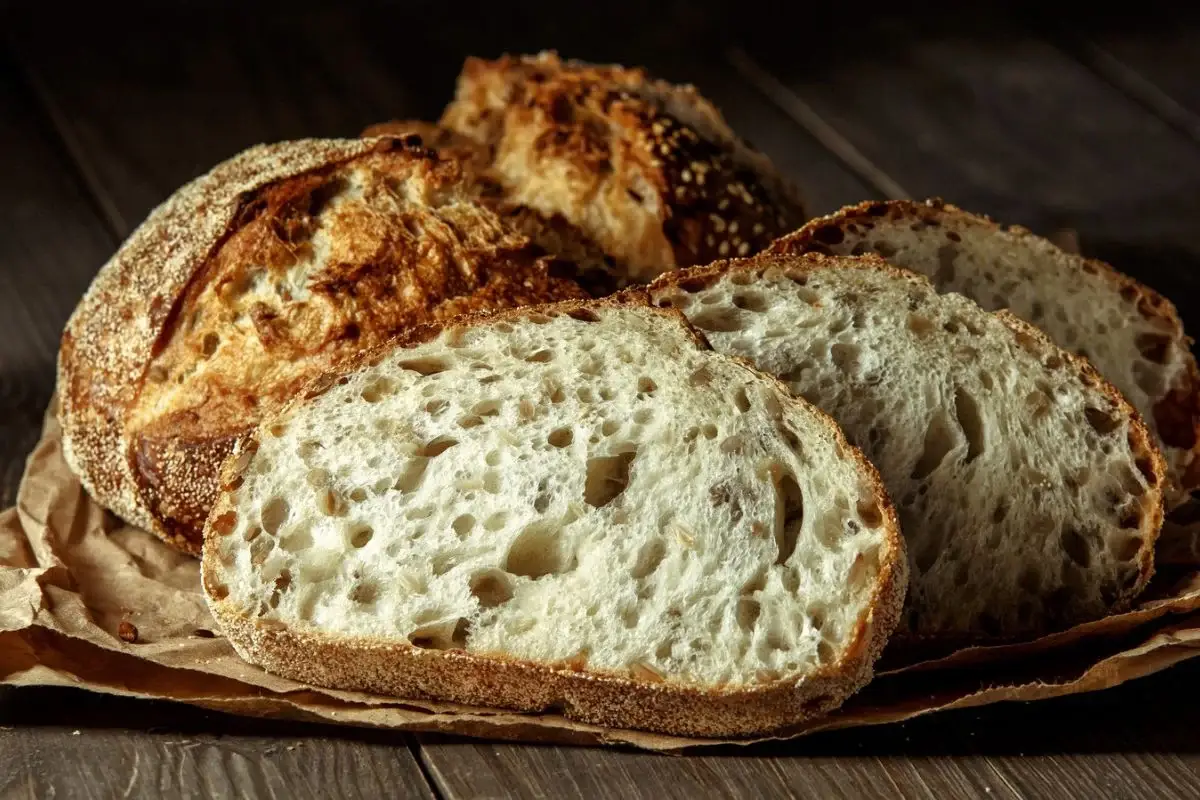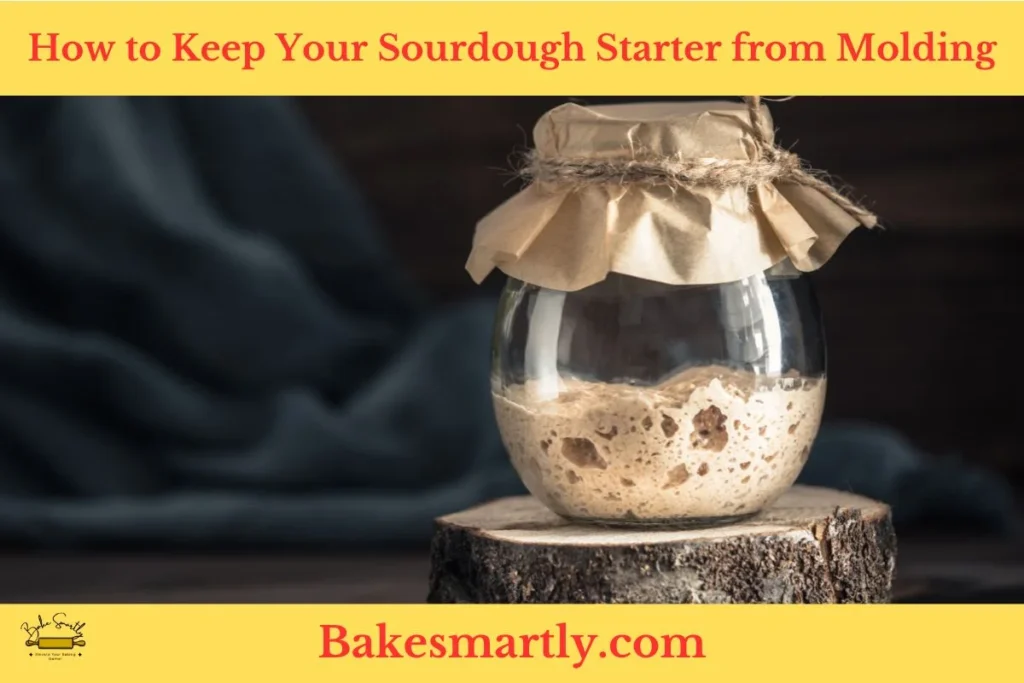
How to Spot and Prevent Sourdough Bread from Going Bad
There’s nothing quite like the taste of freshly baked sourdough bread. But let me tell you about a time when I encountered a problem with my sourdough starter going bad.
One day, as I eagerly prepared to bake a batch of sourdough bread, I noticed an unusual smell coming from my starter. It had a strong, off-putting odor that I had never experienced before. Concerned, I knew something wasn’t right. I realized that my beloved sourdough starter had gone bad, and I couldn’t bear the thought of a disappointing and potentially unsafe loaf.
As a passionate bread enthusiast, I understand the importance of recognizing the signs of a spoiled sourdough starter and taking measures to prevent it from happening. In this article, I will share my personal journey of encountering a spoiled sourdough starter, along with valuable insights on how to identify key indicators of spoilage and the reasons behind it.
Moreover, I will provide you with tips and tricks that I have learned over time to keep your sourdough starter healthy and thriving. Whether you’re an experienced baker like me or just beginning your bread-making adventures, this guide will equip you with the knowledge you need to ensure your sourdough loaves turn out perfectly every time.
So, let’s dive in and explore the fascinating world of sourdough together!
Table of Contents
ToggleSigns of Sourdough Bread Going Bad
Sourdough bread is a living food. It’s made from a mixture of flour and water that’s been left to ferment, allowing wild yeasts and bacteria to grow and develop. While this fermentation process is what gives sourdough bread its distinctive flavor and texture, it’s also what makes it susceptible to spoilage.
So, how can you tell if your sourdough bread has gone bad? The most obvious sign is a sour or unpleasant smell. If your bread smells off or has a strong, unpleasant odor, it’s likely that the fermentation process has gone too far. You may also notice mold growing on the surface of the bread or a slimy texture.
Another indicator of spoiled sourdough is a change in texture. Fresh sourdough bread should be chewy and slightly crusty on the outside, with a soft, moist crumb inside. If your bread is dry, crumbly, or has a tough, rubbery texture, it may be past its prime.
Finally, pay attention to the taste of your sourdough bread. While sourdough naturally has a tangy flavor, if it tastes overly sour or bitter, it may be spoiled. Trust your senses – if your bread smells, looks, or tastes off, it’s best to err on the side of caution and discard it.

How Does Sourdough Bread Go Bad?
Before we dive into the specifics of spotting and preventing sourdough bread from going bad, it’s essential to understand the factors that contribute to its spoilage.
Sourdough bread is made through a fermentation process using naturally occurring yeasts and bacteria. These microorganisms create a symbiotic culture that gives sourdough its distinct flavor and texture. However, if the conditions are not ideal, harmful bacteria and molds can thrive, leading to spoilage.
Factors that can cause sourdough bread to go bad include:
- Excessive moisture: Moisture promotes mold growth, which can quickly spoil sourdough bread.
- Temperature: Warm temperatures accelerate the growth of bacteria and mold, while cold temperatures can cause the bread to stale quickly.
- Exposure to air: Oxygen exposure can lead to mold growth and make the bread stale.
- Contaminated ingredients or utensils: Using contaminated water, flour, or utensils can introduce harmful bacteria or molds to the dough.
- Improper storage: Storing sourdough bread in an unsuitable environment can speed up its spoilage.
How to Spot and Prevent Sourdough Bread from Going Bad
Now that we understand the factors that contribute to sourdough bread spoilage, let’s explore how to spot signs of spoilage and prevent it from happening in the first place. By following these guidelines, you can maximize the shelf life of your sourdough bread and enjoy it at its best.
1. Appearance: Look for Mold or Discoloration
The first thing to inspect when checking the freshness of sourdough bread is its appearance. Mold growth is a clear indication that the bread has gone bad. Look for fuzzy patches or green, blue, or white spots on the surface. If you notice any mold, it’s crucial to discard the bread immediately to prevent the spread of harmful microorganisms.
Furthermore, pay attention to any unusual discoloration. Sourdough bread should have a golden-brown crust and an even color throughout the crumb. Dark or discolored spots may indicate spoilage.
2. Texture: Check for Staleness or Excessive Moisture
The texture of sourdough bread is another telltale sign of its freshness. When evaluating the texture, consider the following:
- Staleness: Sourdough bread that has gone stale will be tough and hard to chew. It may also crumble easily when sliced or torn. Fresh sourdough bread, on the other hand, should have a soft and slightly chewy texture.
- Excessive Moisture: Moisture is the enemy of sourdough bread. If the bread feels excessively moist or sticky, it may indicate the growth of unwanted microorganisms. Properly fermented sourdough should have a balanced moisture content.
3. Smell: Detect Off Odors
The aroma of sourdough bread is a reliable indicator of its freshness. Freshly baked sourdough should have a pleasant, slightly tangy smell. However, if you detect any off odors such as a strong musty smell or signs of fermentation, it’s a sign that the bread has spoiled. Trust your sense of smell and discard any sourdough bread with unpleasant odors.
4. Shelf Life: Consume Within a Reasonable Time
Sourdough bread, unlike commercially produced bread, has a shorter shelf life due to its lack of preservatives. To enjoy it at its best, consume sourdough bread within a reasonable time frame. Typically, sourdough bread stays fresh for 2 to 3 days at room temperature. However, you can extend its shelf life by following proper storage techniques, which we will discuss later in this article.
5. Avoid Cross-Contamination: Keep Utensils and Surfaces Clean
Preventing sourdough bread from going bad starts with maintaining proper hygiene in your kitchen. Cross-contamination from utensils, surfaces, or hands can introduce harmful bacteria or molds to the dough, leading to spoilage. Here are some tips to prevent cross-contamination:
- Cleanliness: Ensure that all utensils and surfaces used for sourdough bread preparation are thoroughly cleaned before each use.
- Separate utensils: Use separate utensils for handling raw ingredients, such as water and flour, to avoid cross-contamination.
- Hand hygiene: Wash your hands thoroughly before handling sourdough bread dough to prevent the transfer of harmful microorganisms.
6. Store Properly: Optimal Conditions for Freshness
Proper storage is essential for preserving the freshness of sourdough bread. Follow these guidelines to extend its shelf life:
- Cool and dry: Store sourdough bread in a cool, dry place, away from direct sunlight and sources of heat. A bread box or a paper bag can help maintain the ideal storage conditions.
- Avoid plastic bags: While plastic bags may seem convenient, they can trap moisture and promote mold growth. Opt for breathable storage options instead.
- Freezing: If you have excess sourdough bread that you won’t consume within a few days, freezing is an excellent option. Wrap the bread tightly in plastic wrap or aluminum foil, then place it in a freezer bag. Frozen sourdough bread can stay fresh for up to 3 months.
- Thawing frozen sourdough: When thawing frozen sourdough bread, allow it to thaw at room temperature or in a preheated oven. Avoid microwaving, as it can make the bread soggy.
Common Mistakes to Avoid When Storing Sourdough Bread
While proper storage is important for preventing sourdough bread spoilage, there are also a few common mistakes to avoid. Here are a few things to keep in mind:
- Don’t store your bread in the refrigerator. As mentioned earlier, this can dry out your bread and make it stale.
- Avoid storing your bread in plastic wrap. This can trap moisture and promote mold growth.
- Don’t store your bread in a sealed container. Sourdough bread needs to breathe, and a sealed container can trap moisture and promote mold growth.
By avoiding these common mistakes, you can help keep your sourdough bread fresh and delicious for longer.
How to Revive Stale Sourdough Bread
If you’ve accidentally let your sourdough bread go stale, don’t despair – it’s still salvageable. Here are a few tips for reviving stale sourdough bread:
- Sprinkle a little bit of water on the surface of the bread and wrap it in foil. Place it in a preheated oven at 350°F for 5-10 minutes.
- Toast the bread. This will help remove any excess moisture and bring out the flavor of the bread.
- Use stale bread for croutons or breadcrumbs. Stale bread can still be useful in the kitchen, even if it’s no longer suitable for sandwiches or toast.
Frequently Asked Questions Sourdough Bread from Going Bad
Can I still eat sourdough bread if it has a little mold on the crust?
Is it normal for sourdough bread to be slightly sour?
Can I refrigerate sourdough bread to extend its freshness?
How can I prevent my sourdough bread from becoming stale?
Can I use sourdough bread that has gone stale?
How long does homemade sourdough bread typically stay fresh?
Conclusion | Enjoying Fresh and Delicious Sourdough Bread
Sourdough bread is a delightful culinary creation that requires proper care to prevent spoilage. By being attentive to the appearance, texture, smell, and shelf life of sourdough bread, you can easily spot signs of spoilage.
Additionally, following good hygiene practices, proper storage techniques, and using the bread within a reasonable time frame will help prevent it from going bad. So, keep these tips in mind and savor the tangy goodness of fresh sourdough bread for as long as possible.
Lindsey Mackenzie
About me
Hi there! I’m Lindsey Mackenzie, the founder of Bake Smartly. Baking has been my passion since childhood, growing up in my father’s bakery. With Bake Smartly, I’m excited to share my love for all things sweet and savory. Join me on this delicious journey as we whip up scrumptious treats and sprinkle joy into every bite!






